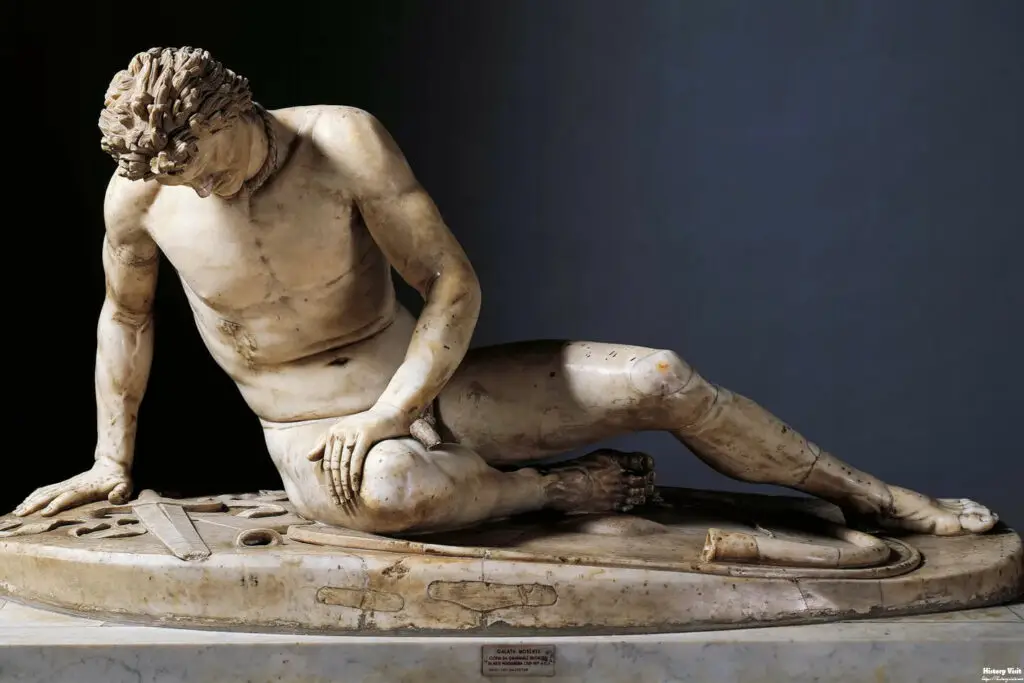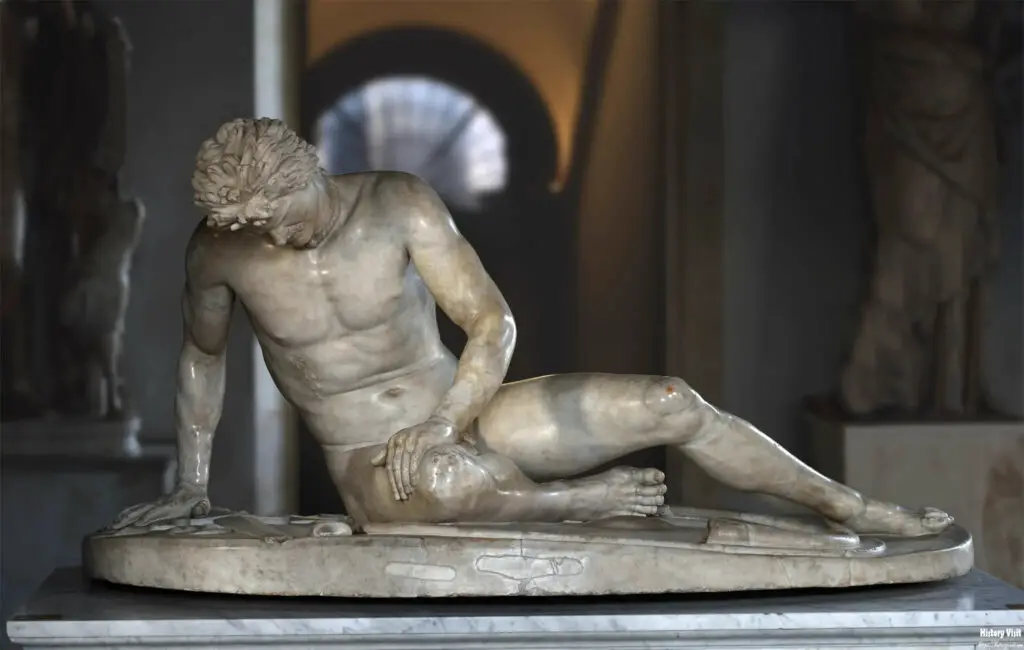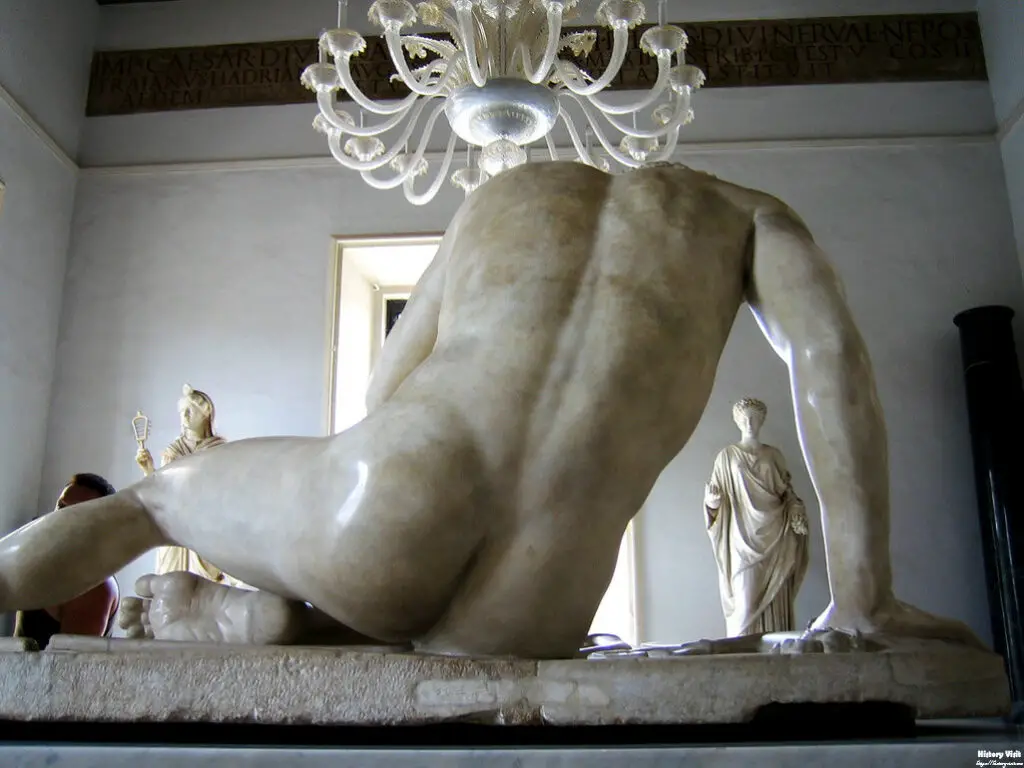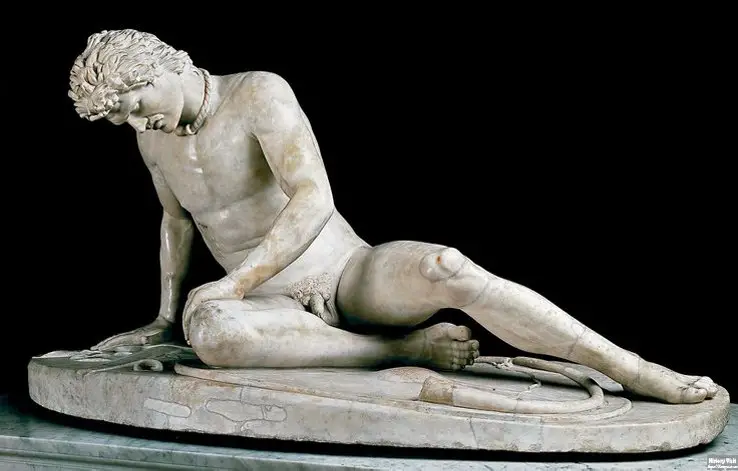Roman Statue: The Dying Gaul’s Timeless Impact

Introduction
The Dying Gaul is a poignant Roman statue. It showcases the artistic brilliance of ancient civilizations. This masterpiece exemplifies technical prowess and provides historical insights. We will explore its origins, rediscovery, artistic elements, and lasting impact.
The statue’s origins trace back to a tumultuous period marked by Roman and Gallic conflicts. Commissioned to commemorate a military victory, The Dying Gaul symbolized Roman dominance. Created during the Hellenistic period, it adds depth to its artistic and historical importance.

Rediscovered during the Renaissance, The Dying Gaul gained new life and influence. It inspired countless artists and scholars. Today, housed in the Capitoline Museums in Rome, it continues to captivate audiences. Its profound emotional impact and technical brilliance remain unmatched.
The statue’s journey from ancient creation to modern exhibition underscores its enduring significance. Public exhibitions and scholarly studies keep the statue in the limelight. New generations appreciate its artistic and historical value. Its emotional resonance and detailed craftsmanship make it timeless.
The Origin of The Dying Gaul

The Dying Gaul was created during the Hellenistic period. This period focused on realism and human experience. The statue commemorated Rome’s victory over the Gallic tribes. Specifically, it marked the defeat of the Galatians in Anatolia.
The statue symbolized Roman dominance and enemy valor. The detailed depiction of the Gaul’s wounds, his pained expression, and his dignified posture all contribute to its emotional impact. This blend of realism and idealism is a hallmark of Hellenistic art.
The statue’s historical context adds significance. The conflicts between Rome and the Gallic tribes were fierce and prolonged. The Dying Gaul captures this dynamic, offering a poignant reminder of war’s human cost.
Understanding the statue’s origin helps us appreciate its role in Roman art and propaganda. It commemorated victories and portrayed enemies with humanity. This dual message of dominance and respect is intricately woven into The Dying Gaul.
Rediscovery and Restoration

The Dying Gaul was rediscovered during the Renaissance. This period revived interest in classical antiquity. Its lifelike representation and emotional depth resonated with Renaissance artists. They sought to emulate ancient techniques.
Early restorations aimed to preserve the statue’s integrity. Efforts included repairing damaged sections and ensuring structural stability. Renaissance artists and scholars approached restorations with reverence.
During the Renaissance, The Dying Gaul influenced many prominent artists and thinkers. The statue’s realistic depiction and emotional intensity provided a model for Renaissance artists. Its influence can be seen in the works of Michelangelo and Bernini.
Today, The Dying Gaul is housed in the Capitoline Museums in Rome. Its journey from ancient creation to Renaissance rediscovery and modern exhibition underscores its enduring significance. Public exhibitions and scholarly studies keep the statue in the limelight.
Sculptural Technique and Material

The Dying Gaul is carved from marble. Marble allows for fine detail and lifelike representation. The choice of marble showcases the skill and precision of ancient sculptors. The smooth finish and intricate details highlight technical prowess.
The statue’s posture and expression are meticulously crafted. The Gaul’s twisted torso and pained face enhance the statue’s impact. The careful depiction of wounds adds realism and emotional depth.
The Dying Gaul’s artistic elements reflect broader cultural and historical themes. The realistic portrayal of suffering and the dignified manner of facing fate are significant. This blend of skill and depth makes it powerful and relevant.
Analyzing the sculptural technique and material helps us appreciate the expertise involved. Detailed craftsmanship brings the figure to life. The statue’s artistry transcends time, evoking profound responses from viewers.
Detailed Examination of the Figure

The figure of The Dying Gaul represents human suffering and nobility. The slumped posture suggests imminent death. Despite pain, his expression remains dignified.
The depiction of wounds is realistic and symbolic. Detailed carving highlights the sculptor’s skill. The Gaul’s twisted body evokes empathy and contemplation.
The statue’s emotional impact is enhanced by its scale. The life-sized figure creates an immediate connection. Intricate details invite close examination and reflection.
A detailed examination of the figure underscores the statue’s ability to convey complex emotions. The combination of technical precision and emotional depth allows The Dying Gaul to transcend its historical context. It resonates with contemporary audiences.
The Statue’s Place in Art History

The Dying Gaul bridges Hellenistic and Roman artistic traditions. Its realistic portrayal of suffering is Hellenistic. Its creation for a Roman audience shows cultural exchange.
Rediscovered during the Renaissance, it inspired artists. The Dying Gaul’s influence is seen in works of Michelangelo and Bernini. They captured similar emotional intensity and realism.
Today, The Dying Gaul is celebrated as an art masterpiece. It remains a subject of fascination and admiration. The statue’s universal themes make it timeless.
Understanding the statue’s place in art history allows us to appreciate its influence. The Dying Gaul inspired generations of artists. It solidified its status as a cornerstone of Western art.
Conclusion

The Dying Gaul stands as a testament to ancient civilizations’ artistic brilliance. Its journey from creation to modern exhibition is remarkable. The statue’s realistic portrayal and emotional depth make it a masterpiece.
It evokes empathy and contemplation. The statue highlights the skill and vision of its creators. It captures heroism and suffering in a single figure.
The Dying Gaul transcends historical and cultural boundaries. Its legacy endures through generations. The statue connects us to the past and inspires future art.
The Dying Gaul’s story is one of resilience and artistic achievement. Its journey from ancient Rome to modern exhibitions showcases its lasting relevance. The statue remains a powerful symbol of human strength and vulnerability, captivating audiences and inspiring artists across the ages.


